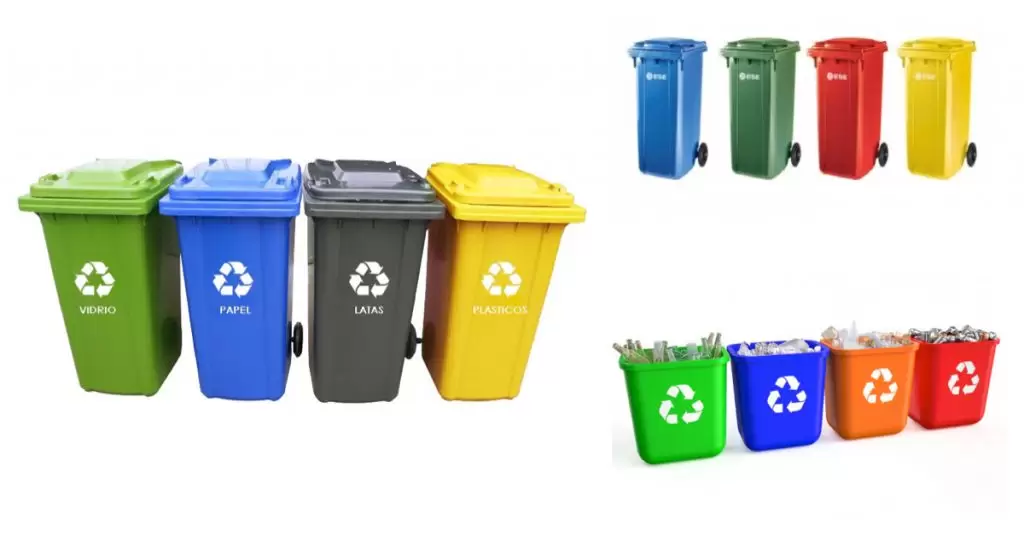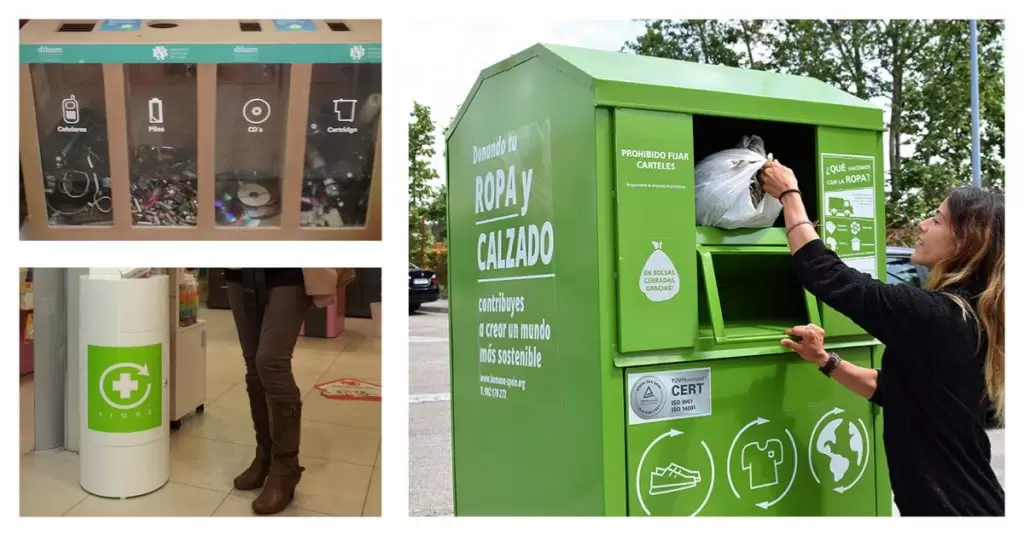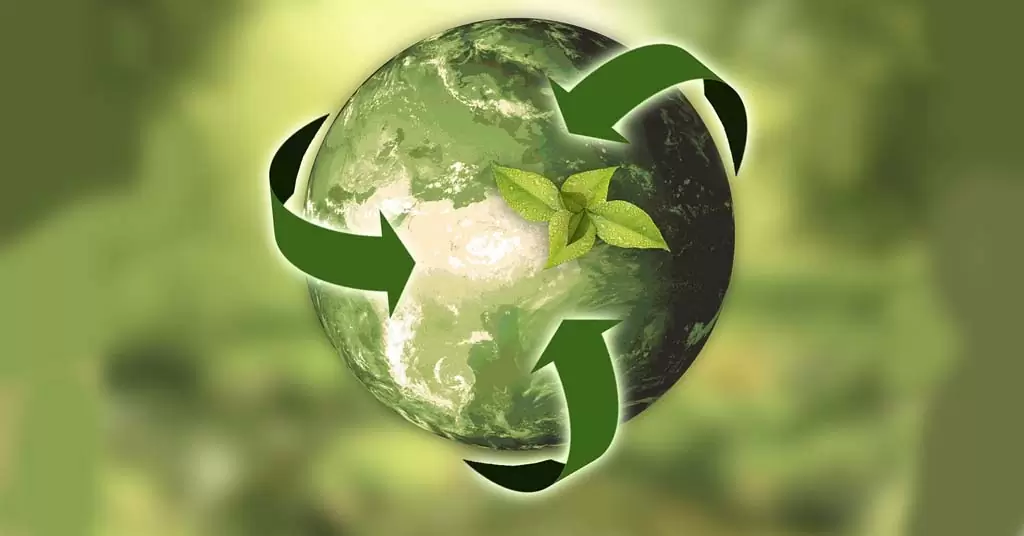Recycling is becoming increasingly important worldwide. Therefore, we must work to remove the doubts – which still remain – about what kind of waste should be disposed of in recycling containers.
The aim of using the recycling containers is to divide, in the most ideal way possible, the waste coming from each of us.
In addition, they contribute to the elimination of garbage dumps, seek to prevent waste from reaching water bodies, such as seas and lakes, and preserve natural resources, improving our quality of life.
According to Ecoembes, a Spanish environmental organization, 99% of Spaniards have access to selective collection with a container every 100 meters. Despite this, not everyone knows how to use the recycling containers.
Each container is identified by its color and each color means the type of material that must be disposed of.
It is a very practical system that allows, if possible, to reuse the raw material and helps to preserve the environment
If you have any doubts, keep reading so you can get out of them and understand how the system works.
Table of Contents
Types of recycling containers you can find on the street

The main types of containers that exist are:
- Cargo container: These are the most common. The waste is thrown in the opening of the container and when the garbage collection truck passes by, it empties the container.
- Igloo shaped container: They are rounded in shape and are used for glass waste, although sometimes they are used for the rest of the waste.
- Underground container: The containers are located underground and only the container entrance is left on the surface to dispose of the waste.
- Bagging container: These are containers that are placed in areas that are difficult to access. The waste is thrown in the bag that is inside the container and when it does not have more capacity, it is taken out and taken to the garbage truck.
- Pneumatic collection container: the waste is thrown in the garbage containers, but it is emptied through an underground pipe that carries the garbage, from where it is thrown, to a central station. They are usually used in areas that are frequented by many people.
Every waste has its own container

As you read, each residue goes into a specific container. We must respect it so as not to generate inconveniences in the whole system of collection and classification of waste.
The containers have colors that identify what type of waste belongs to each one, to be able to recycle some materials.
Below, you will see what the meaning of each of these colours is.
Green recycling container
Glass waste is placed in the green container regardless of whether it is bottles, jars or jars. It is important that, before throwing glass objects, you make sure that none are made of glass, it is a confusion that often happens.
Glass is a material that can be reused again and again, if treated properly.
After being collected from each container, the waste glass goes through a process of crushing and deep cleaning to be used again in some factory.
Blue container
These are the containers in which all paper or cardboard waste is deposited
A waste that causes confusion is the tetra brik, people usually deposit it in the blue container, but it goes in the yellow container, because among its components is the plastic.
Other waste such as napkins, toilet paper and used diapers should go in the brown container, where organic waste is deposited.
The paper collected in each blue container is taken to plants where they are sorted according to their type, cleaned and pressed into the form of bales.
The process ends with the transfer to recovery paper factories, where they will be transformed into new paper or cardboard objects.
Red
This container holds waste that is hazardous or toxic, such as hospital waste, aerosols or technology products.
As these containers handle this type of waste, it is not common to get them on a large scale in urban areas.
Brown recycling container
It is a division created from the grey waste container, and it works for organic waste.
The organic waste is used to make compost and fertilizer for the plants. That is why only used food, shells and napkins should be kept in this container.
Yellow container
Plastic, metal and tetra-briks containers are placed in this container
Although it is a container where objects made of plastic are deposited, it is wrong to throw away toys and other plastic objects that are used daily.
Those materials other materials in their composition. For that kind of waste, there’s the grey bin.
All the containers that are collected from the yellow containers are taken to selection plants to be separated, washed and then delivered to the industries that will recycle them.
Orange container
In this container, the oil that has already been used for cooking is discarded. In order to throw it away, you must pour the oil into a jar and then put it into these recycling containers.
The discarded oil is taken to factories that manufacture biodiesel.
At the factories, the oil they collect from the containers goes through a process where they remove additives, water, metals and food scraps.
After that there is a kind of lubricant base that serves to create bitumen, biodiesel, road asphalt, ink, waterproofing fabrics and even paints.
The recycled oil should not be used for human consumption, because of the high content of chemicals that were used to clean it.
Grey container
It is used for waste that has no other form of use, i.e. household waste and garbage that is not disposable in other containers.
Even though this container does not have a number of products that should be disposed of in it, you should avoid throwing away the garbage because you do not know what the usefulness of each one is.
Other types of recycling containers

Special containers, unlike the usual recycling containers, take care of a specific type of product to be reused or treated according to the materials with which it is made. These are:
- Containers for medicines: In these containers, all the medicines that are expired or those that you don’t use are introduced. Boxes, blister packs, packaging and medical leaflets are also discarded.
- Clothing containers: These are placed by charitable organizations to collect clothes and shoes to donate to people with limited resources.
- Battery containers: Specially designed to dispose of batteries and small batteries, which are very polluting because of the chemical compounds that make them work.
Clean points in Spain

These are special places that are usually outside the cities, whose function is to store free of charge the waste that is not thrown in the containers because of its size, its components or because it is toxic.
Once at the clean points, the waste is separated into four types of waste for special treatment.
The clean points receive the following products:
- Electronic waste: These are devices that run on batteries or electricity, and always carry a symbol that they should not be disposed of in a normal waste container.
- Construction and demolition waste: Materials such as bricks, cement or rubble, which do not have physical changes, but are very heavy materials for containers.
- Toxic and dangerous waste: These are the products that were manufactured in industries and have a high amount of chemical substances in their composition. For separation purposes, the substance and the container in which it was contained are considered toxic waste.
Greenuso’s products

In our online shop, you will find a wide range of ecological products: biodegradable, compostable, reusable and recyclable.
Depending on their material and the type of use you are going to give them, the recommendation is that you dispose of them in the container designed for that type of material.
In this way, ecological materials, such as biodegradable dishes, can go in the organic product container, as they will disappear without doing any damage.
Remember that, as citizens, we have the responsibility to promote the correct management of our waste. This is the only way to ensure that the processes are carried out in the right way.



